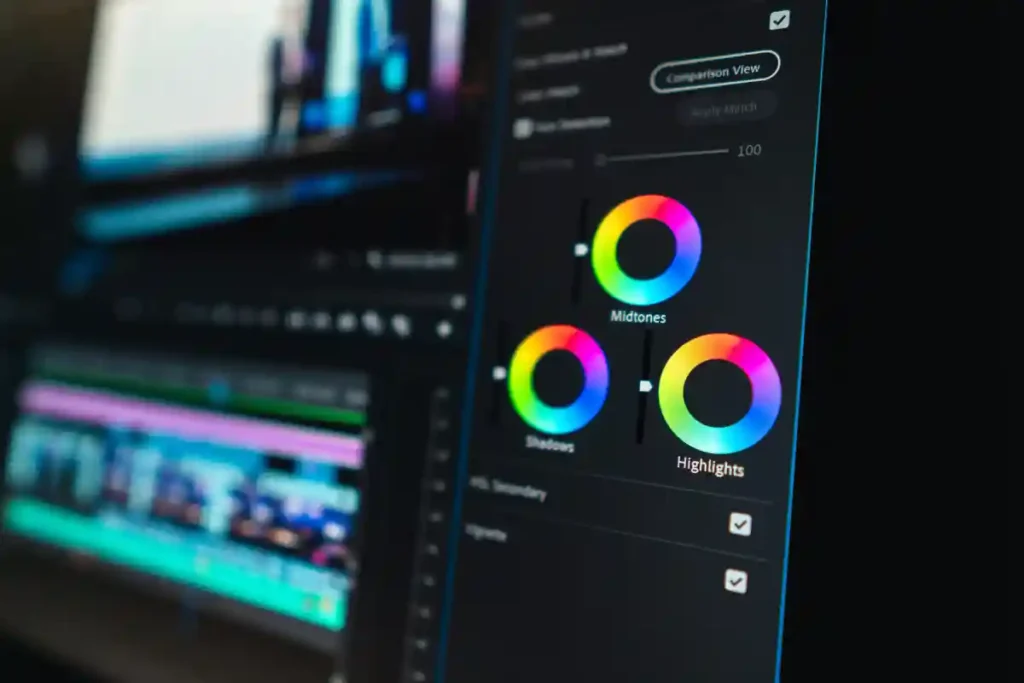In the ever-evolving world of creative careers, having a strong portfolio is not just an advantage—it’s a necessity. As a creative professional, your portfolio is your gateway to opportunities, showcasing your skills, style, and creativity to potential clients and employers. In recent years, video editing has become a pivotal element in portfolio development, offering a dynamic and engaging way to present your work. But why is video editing so crucial, and how can it help you build a portfolio that stands out?
The Power of Visual Storytelling
Visual storytelling is a powerful tool that transcends the limitations of words and static images. In a portfolio, visuals can communicate emotions, ideas, and narratives in ways that resonate deeply with viewers. Videos, in particular, can captivate audiences, drawing them into the story you’re telling. By integrating video into your portfolio, you can enhance audience engagement, making your work more memorable and impactful.
Video Editing as a Core Skill
For creatives, video editing is more than just a technical skill—it’s a form of artistic expression. Whether you’re a graphic designer, a photographer, or a filmmaker, the ability to edit videos allows you to showcase your work in a dynamic format. Video editing enables you to craft a narrative, highlight key elements of your projects, and present your work in a cohesive and compelling way. As the demand for video content continues to grow across industries, mastering video editing is becoming increasingly essential for creative professionals.

Creating a Compelling Portfolio with Video
A successful video portfolio is one that effectively communicates your skills, creativity, and versatility. To achieve this, it’s important to carefully select the work you include. Choose projects that showcase your technical abilities and reflect your unique style and creative vision. Consider the story you want to tell with your portfolio—how do the pieces fit together? What do they say about you as a creative? By thoughtfully curating your portfolio, you can create a powerful visual narrative that resonates with your audience.
Showcasing Versatility through Video Editing
One of the advantages of video editing is its ability to showcase a wide range of skills and styles. In your portfolio, you can include projects demonstrating your proficiency in video production, such as animation, motion graphics, and sound design. This versatility is particularly important for creatives who work in multiple disciplines, as it allows you to highlight your adaptability and breadth of expertise. Including a diverse array of projects in your portfolio not only showcases your skills but also makes you a more attractive candidate for a wider range of opportunities.
Crafting a Narrative with Your Portfolio
Your portfolio should do more than just display your work—it should tell a story. A well-crafted narrative can make your portfolio more engaging and memorable, guiding viewers through your creative journey. When organizing your video portfolio, think about how each project contributes to the overall narrative. Consider the order in which you present your work, and how each piece connects to the next. A strong narrative can help you create a cohesive and impactful portfolio that leaves a lasting impression.
Technical Aspects of Video Editing for Portfolios
While creativity is key, the technical aspects of video editing are equally important in building a professional portfolio. Quality and consistency are critical—poorly edited videos can detract from your work and create a negative impression. To avoid this, focus on mastering basic video editing techniques, such as trimming, color correction, and audio balancing. Consistency in editing style across your portfolio can also enhance its overall presentation, creating a polished and professional look.
Video Editing for Different Creative Careers
Video editing is a versatile skill that can be applied to a wide range of creative careers. Whether you’re in graphic design, photography, or even marketing, video editing can help you present your work in a dynamic format that captures attention. Tailoring your video portfolio to your specific career path is crucial—focus on projects that align with the industry you’re targeting and highlight the skills that are most relevant to your desired role. This targeted approach can make your portfolio more appealing to potential clients and employers in your field.
Building a Brand Through Video
In today’s digital age, personal branding is more important than ever. A well-edited video portfolio can play a key role in establishing and enhancing your brand. Videos allow you to showcase your personality, style, and creative vision in a way that static images and text cannot. By consistently producing high-quality video content, you can build a strong brand identity that sets you apart from the competition and resonates with your target audience.
The Importance of Feedback and Revisions
Creating a video portfolio is not a one-and-done process—it’s an ongoing journey of refinement and improvement. Seeking feedback from peers, mentors, and even potential clients can provide valuable insights into how your portfolio is perceived and where it can be improved. Use this feedback to make revisions and continuously update your portfolio, ensuring that it remains relevant and reflective of your evolving skills and creative vision.
Staying Updated with Video Editing Trends
The field of video editing is constantly evolving, with new techniques, tools, and trends emerging regularly. Staying updated with these trends is essential for keeping your portfolio relevant and competitive. Whether it’s experimenting with new editing styles or incorporating the latest technology, staying current can help you create a portfolio that not only showcases your skills but also positions you as a forward-thinking creative professional.
Overcoming Common Challenges in Video Editing
Video editing can be challenging, especially for those who are new to the field. Common hurdles include mastering the software, maintaining consistency, and managing time effectively. However, these challenges can be overcome with practice, patience, and a willingness to learn. Don’t be discouraged by initial difficulties—view them as opportunities to grow and improve your skills. With persistence, you can develop the video editing expertise needed to create a standout portfolio.
Conclusion
In the competitive world of creative careers, a strong portfolio is your most valuable asset. Video editing plays a crucial role in building a portfolio that not only showcases your skills but also tells your unique story. By investing time and effort into mastering video editing and carefully curating your portfolio, you can create a dynamic, engaging, and versatile showcase of your work that sets you apart in the creative industry.






